Europe’s culinary landscape is as diverse as its cultures, with each country offering dishes deeply rooted in history, tradition, and local ingredients. A foodie journey through Europe is about savoring flavors and understanding the stories behind these dishes and the people who make them. From the hearty stews of Eastern Europe to the refined pastries of France, this guide highlights must-try dishes across the continent and where to find the best local flavors, offering travelers a taste of Europe’s rich gastronomic heritage.
1. Italy: Pizza in Naples
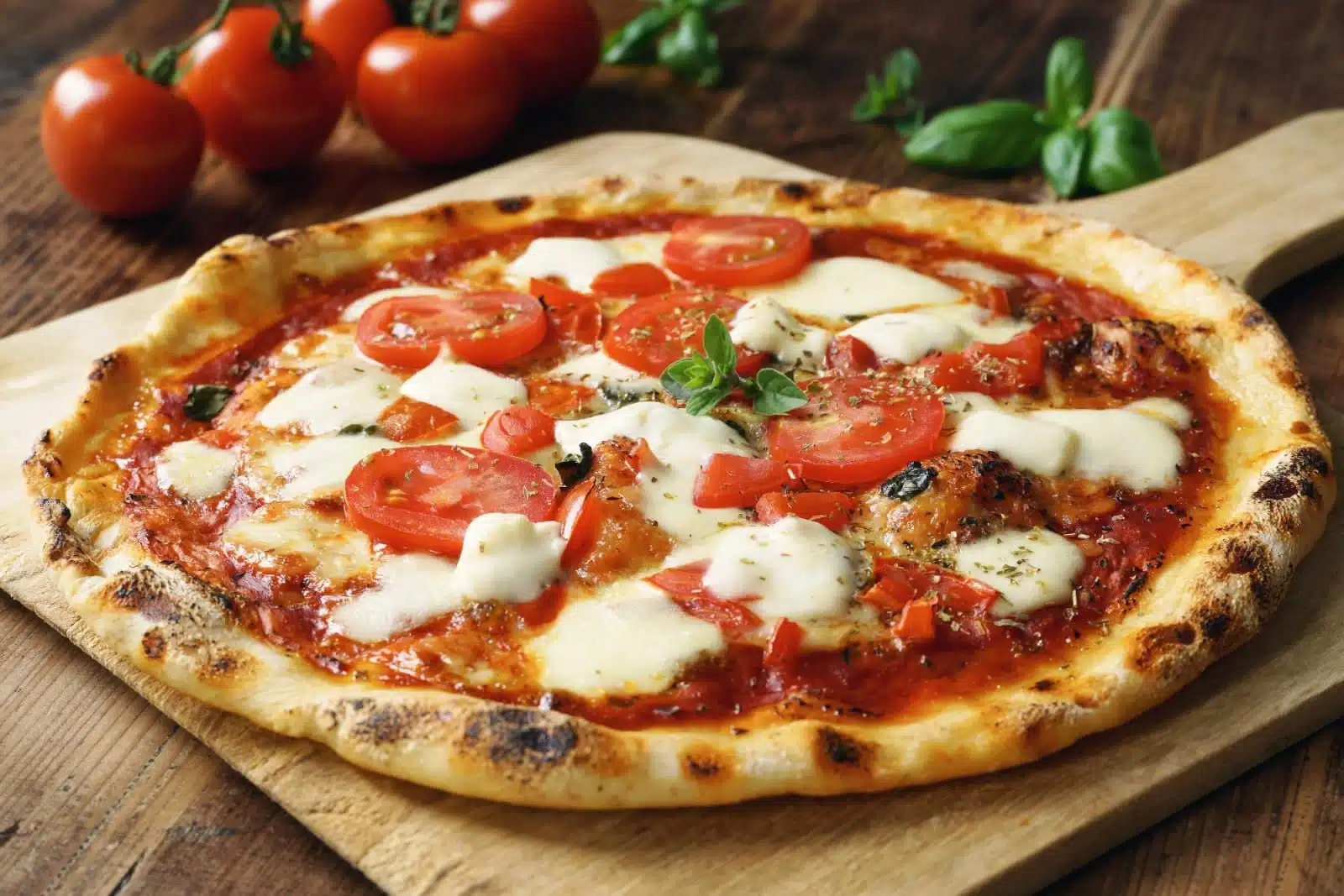
Image Credit: Shutterstock / V. Matthiesen
Italy is synonymous with pizza, and Naples is its undisputed birthplace. Neapolitan pizza is divine with its simple yet flavorful ingredients—San Marzano tomatoes, mozzarella di bufala, fresh basil, salt, and olive oil—on a soft, chewy crust. The art of Neapolitan pizza making, or “pizzaiuolo,” is even recognized by UNESCO as an Intangible Cultural Heritage of Humanity. Authentic pizzerias, like Pizzeria Da Michele or Sorbillo, offer a taste of this traditional dish in its purest form, providing a window into the soul of Italian cuisine.
Insider’s Tip: For the most authentic experience, look for pizzerias with a Vera Pizza Napoletana certification, indicating adherence to traditional Neapolitan pizza-making methods.
When to Travel: Naples is delightful in spring (April to June) and fall (September to October), when the weather is mild, and the tourist crowds are thinner.
How to Get There: Naples is well-connected by air with Naples International Airport and by train with services from major Italian cities. The city’s historic center, where many of the best pizzerias are located, is easily navigable on foot.
2. France: Croissant in Paris

Image Credit: Shutterstock / Anna_Pustynnikova
Though rooted in Austrian cuisine, the croissant has become a quintessential part of French culinary identity, especially in Paris. This buttery, flaky pastry is a staple of French breakfasts, best enjoyed fresh from a boulangerie oven. The art of making a perfect croissant involves a meticulous process of layering dough and butter, then rolling and folding multiple times to achieve its iconic texture. Legendary bakeries like Pierre Hermé and Poilâne in Paris offer some of the finest examples, showcasing the croissant’s delicate balance of crunch and softness.
Insider’s Tip: Visit a bakery early in the morning to get croissants fresh out of the oven, when they’re at their most delicious. Pairing with a café au lait at a sidewalk café offers a quintessentially Parisian experience.
When to Travel: Paris is enchanting year-round, but spring and fall offer pleasant weather and smaller crowds, ideal for leisurely café visits and bakery hopping.
How to Get There: Paris is served by two major airports, Charles de Gaulle and Orly, and is a central hub for train travel throughout Europe. The city’s extensive public transportation system makes it easy to explore different neighborhoods and their culinary offerings.
3. Spain: Paella in Valencia

Image Credit: Shutterstock / RossHelen
Paella, Spain’s most famous dish, originates from Valencia. This aromatic rice dish is traditionally cooked in a large shallow pan over an open fire, infused with saffron and various ingredients such as rabbit, chicken, snails, beans, and sometimes seafood. The key to an authentic paella Valenciana lies in the use of Bomba rice, which absorbs the flavors of the broth, and the formation of the socarrat, a caramelized crust of rice at the bottom of the pan. Restaurants like La Pepica and Casa Roberto in Valencia offer some of the most authentic paella experiences, where the dish is prepared with time-honored techniques and local ingredients.
Insider’s Tip: For a truly Valencian experience, seek out restaurants that cook paella over wood fires, as the smoke adds a distinctive flavor to the dish. Remember, traditional Valencian paella is typically eaten for lunch rather than dinner.
When to Travel: Valencia is pleasant in the spring (March to May) and fall (September to November), with fewer tourists and mild weather perfect for enjoying a meal outdoors.
How to Get There: Valencia has its own international airport and is well-connected by train and bus to other major Spanish cities. The city’s efficient public transport system makes it easy to explore.
4. Greece: Moussaka in Athens

Image Credit: Pexels / Doze of hope Rafea
Moussaka is a quintessential Greek dish, consisting of layers of sautéed eggplant, minced meat (usually lamb), and a creamy béchamel sauce, baked to perfection. This rich and comforting dish reflects the flavors of the Mediterranean and is a staple in Greek cuisine. In Athens, traditional tavernas like To Kafeneio and Psaras Tavern offer some of the best moussaka, prepared according to traditional recipes passed down through generations. Dining in these establishments provides a taste of authentic Greek moussaka and an immersion into Greek culture and hospitality.
Insider’s Tip: Pair your moussaka with a glass of local Greek wine, such as Agiorgitiko or Xinomavro, to complement the flavors of the dish. Enjoying this meal on a taverna’s terrace adds to the authentic experience.
When to Travel: Athens is best visited in the spring (April to June) or fall (September to October) when the weather is pleasant, and the tourist crowds are smaller.
How to Get There: Athens International Airport serves as the main gateway to Greece, with the city center easily accessible by metro, bus, or taxi. Athens’ compact city center is best explored on foot or by public transportation.
5. Portugal: Bacalhau in Lisbon
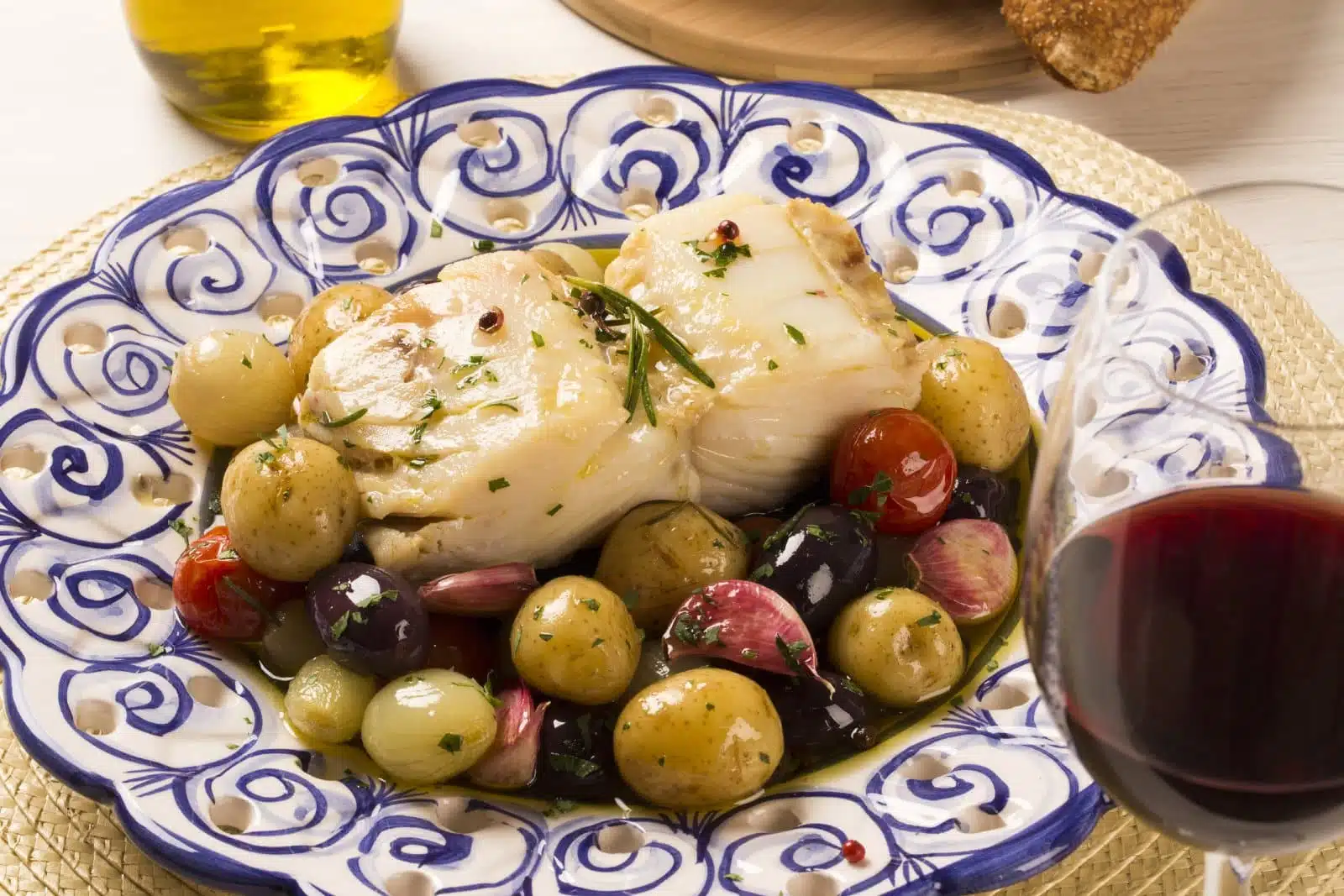
Image Credit: Shutterstock / Paulo Vilela
Bacalhau, or salted cod, is Portugal’s national dish, with the saying that there are 365 ways to cook bacalhau, one for each day of the year. In Lisbon, the dish is prepared in various forms, from bacalhau à brás (shredded cod with onions, straw potatoes, and scrambled eggs) to bacalhau com natas (cod with cream). Time Out Market Lisboa and local eateries like A Casa do Bacalhau offer exceptional versions of these dishes, showcasing bacalhau’s versatility and depth of flavor.
Insider’s Tip: For an authentic experience, visit a traditional tasca (tavern) where bacalhau dishes are served alongside other Portuguese specialties. These smaller, family-run establishments offer a cozy atmosphere and the chance to dine among locals.
When to Travel: Lisbon is a year-round destination, but spring (March to May) and fall (September to November) offer mild weather and fewer tourists, ideal for exploring the city and its culinary offerings.
How to Get There: Lisbon Portela Airport is the main international gateway to Portugal, located just outside the city center. Lisbon’s extensive public transportation network, including trams, buses, and metro, makes navigating the city straightforward.
6. Germany: Sauerbraten in Cologne

Image Credit: Shutterstock / hlphoto
Sauerbraten, often referred to as Germany’s national dish, is a pot roast, usually of beef (but other meats such as lamb, mutton, pork, and traditionally, horse), marinated for several days in a mixture of vinegar or wine, water, and a variety of seasonings before being slow-cooked. The result is a tender, flavorful dish often served with red cabbage, potato dumplings, or boiled potatoes. In Cologne, historic breweries and restaurants like Früh am Dom, and Brauhaus Sion serve some of the best sauerbraten, offering a taste of traditional German cuisine in a rustic, convivial setting.
Insider’s Tip: Sauerbraten is typically enjoyed with a local Kölsch beer, which complements the rich flavors of the dish. Opt for a brewery that serves its own Kölsch for the most authentic experience.
When to Travel: Cologne is vibrant throughout the year, but visiting in the fall (September to November) allows you to enjoy the city’s culinary offerings in cooler weather, and possibly catch the beginning of the Christmas market season.
How to Get There: Cologne Bonn Airport serves the city and is well-connected by train and bus to the city center. Cologne’s efficient public transport system makes exploring the culinary scene and historic sites easy.
7. Hungary: Goulash in Budapest

Image Credit: Shutterstock / Natalia Hanin
Goulash is a hearty stew of meat and vegetables, seasoned with paprika and other spices from Hungary. This iconic dish embodies the warmth and robust flavors of Hungarian cuisine. In Budapest, traditional restaurants and taverns serve authentic goulash, which is more like a soup in Hungary than the thicker stews often found elsewhere. Spots like Gettó Gulyás and Café Kör offer some of the best goulash in the city, prepared with a deep understanding of this centuries-old recipe. These establishments provide a cozy atmosphere where diners can enjoy goulash and various Hungarian dishes.
Insider’s Tip: For a truly local experience, pair your goulash with a glass of Hungarian red wine, such as a Bull’s Blood (Egri Bikavér), which complements the dish’s rich flavors.
When to Travel: Budapest is enchanting in the spring (April to June) and fall (September to November), when the weather is mild and the city less crowded, perfect for culinary explorations.
How to Get There: Budapest Ferenc Liszt International Airport is the main gateway, with the city center easily accessible by public transport, including bus and metro. Budapest’s extensive public transportation system makes exploring different neighborhoods and their culinary offerings easy.
8. Belgium: Moules-Frites in Brussels
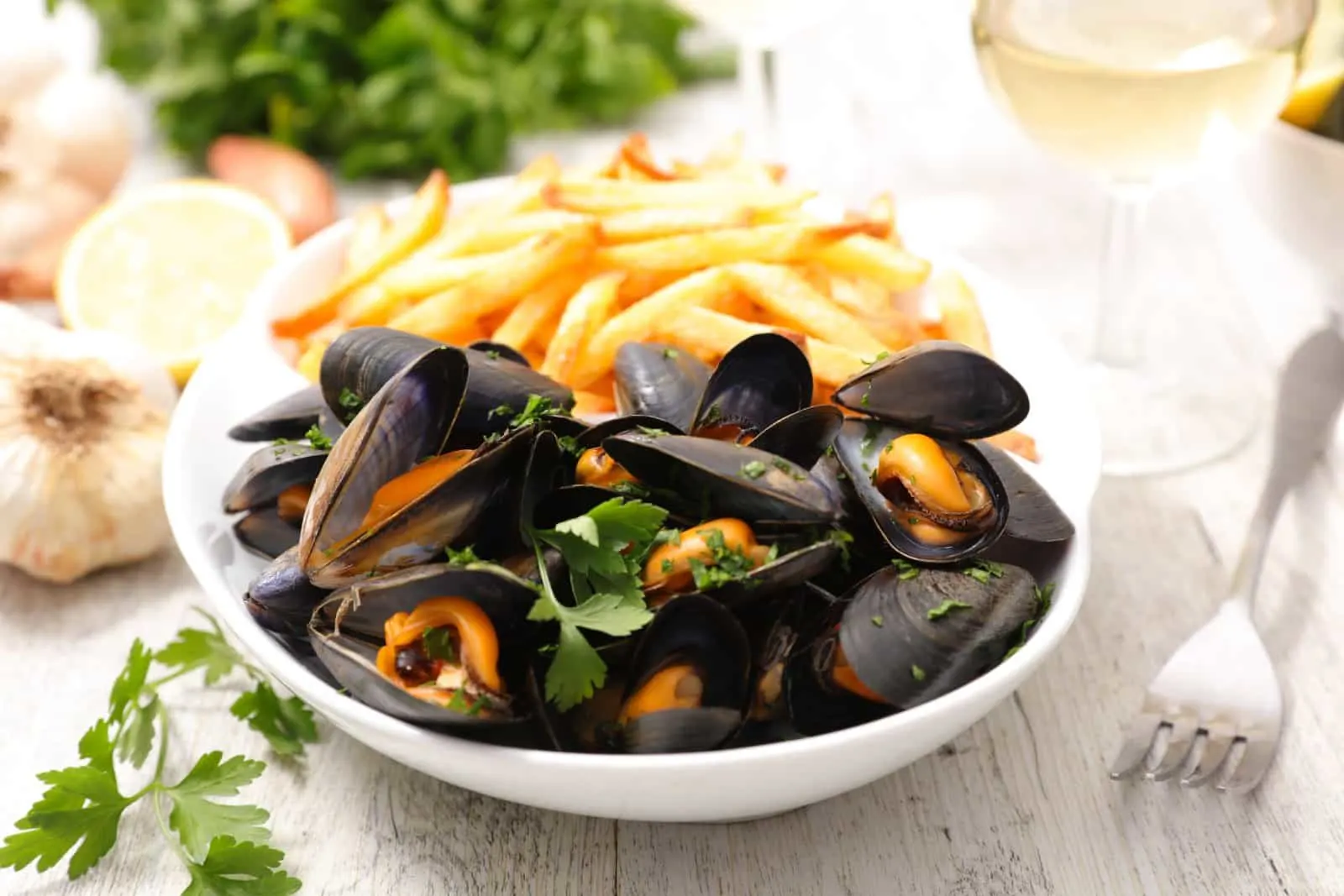
Image Credit: Shutterstock / margouillat photo
Moules-frites, or mussels served with fries, is a beloved dish in Belgium, combining the country’s love for seafood and its claim to have invented the fried potato. In Brussels, restaurants and brasseries across the city serve this classic dish, often with various sauces for the mussels. Chez Léon and Fritland are just a couple of places where locals and tourists alike can enjoy high-quality moules-frites, showcasing the simplicity and deliciousness of Belgian cuisine.
Insider’s Tip: Visit Brussels during the mussel season, from late July to February, when the mussels are freshest. Pairing moules-frites with a Belgian beer enhances the dining experience, with many establishments offering beer recommendations to complement the dish.
When to Travel: Late summer to early fall (August to October) is ideal for enjoying moules-frites during the mussel season, with the added bonus of fewer tourists and pleasant weather.
How to Get There: Brussels Airport serves as a major international hub, with the city center easily reachable by train, bus, or taxi. Though public transport options are readily available, Brussels’ compact size makes it a walkable city.
9. Austria: Wiener Schnitzel in Vienna
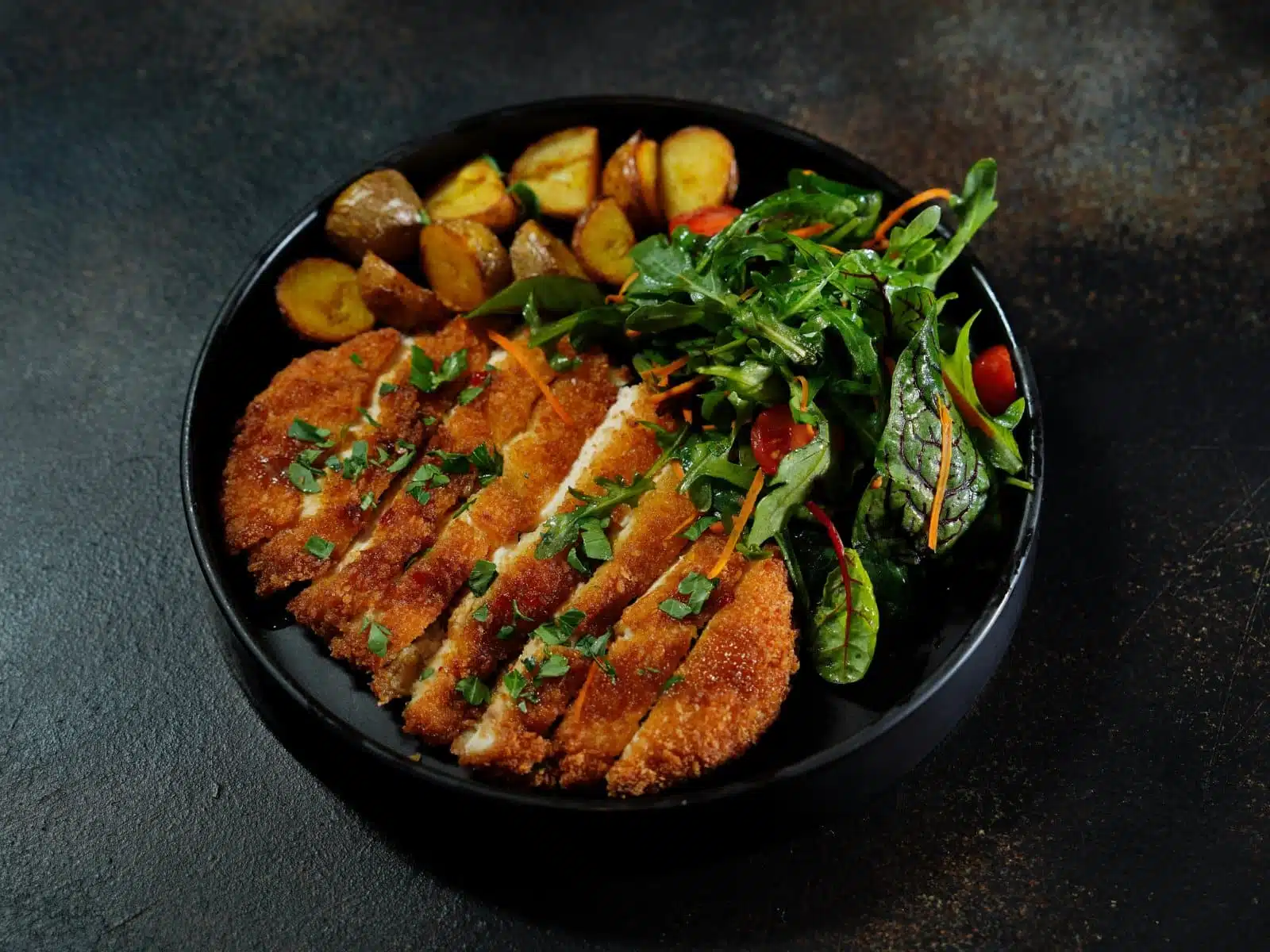
Image Credit: Pexels / Nadin Sh
Wiener Schnitzel, a breaded and fried veal cutlet, is Austria’s national dish and a must-try for visitors to Vienna. This simple yet delicious dish is served in many traditional Viennese restaurants, known as “Wirtshäuser,” with Figlmüller being one of the most famous for serving an oversized version that barely fits on the plate. The key to an authentic Wiener Schnitzel lies in its tender meat, crispy coating, and the use of high-quality ingredients.
Insider’s Tip: While traditionally made with veal, many places offer a pork version, which is also worth trying. Enjoy your Wiener Schnitzel with a side of potato salad and a slice of lemon for the authentic Viennese experience.
When to Travel: Vienna is beautiful year-round, but spring (April to June) and fall (September to November) offer mild weather and fewer crowds, ideal for exploring the city’s culinary scene.
How to Get There: Vienna International Airport is well-connected to the city via the CAT (City Airport Train), regular trains, and buses. Vienna’s public transport system is efficient and reliable, making it easy to navigate the city.
10. Turkey: Kebab in Istanbul
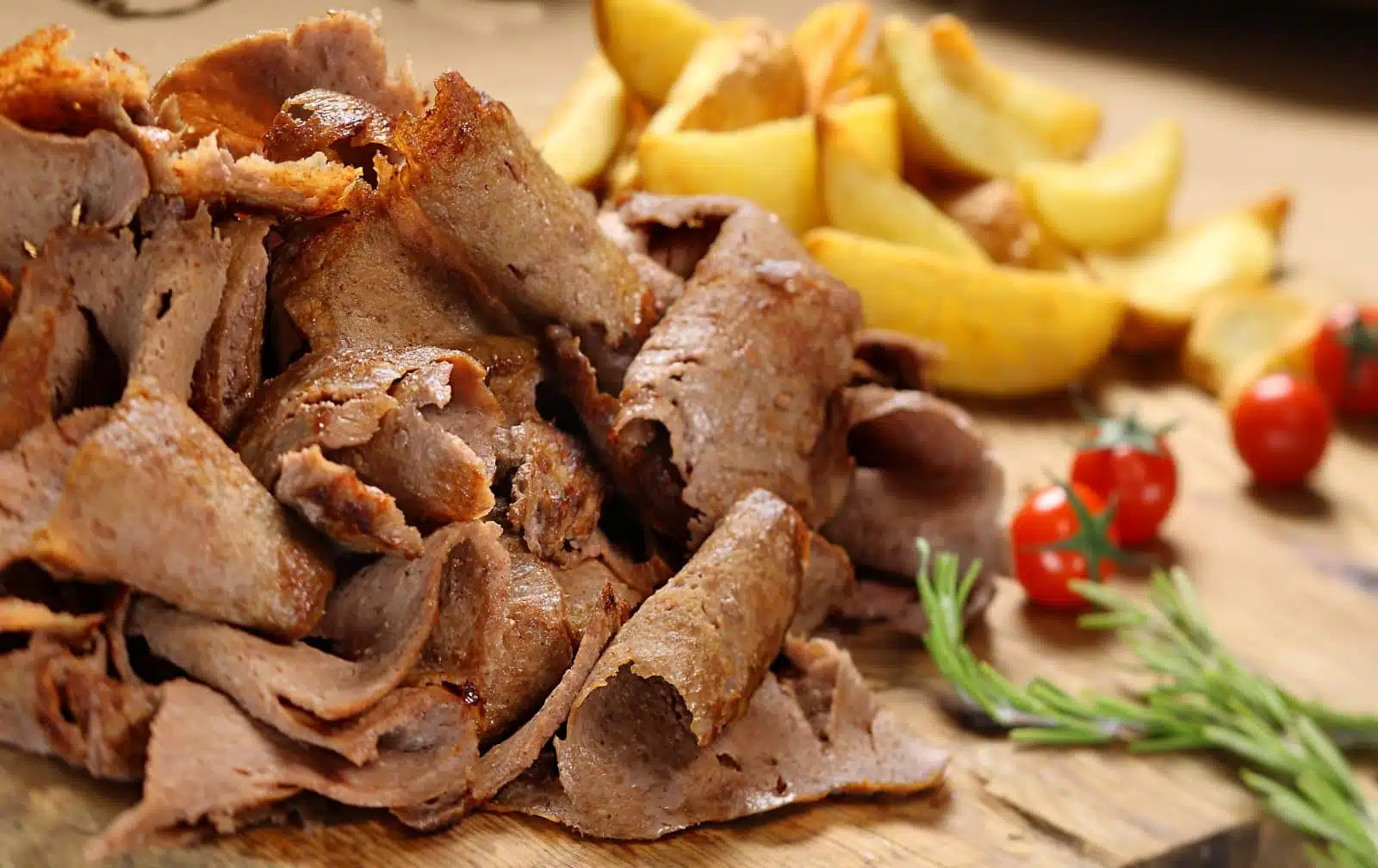
Image Credit: Shutterstock / Prenes
The kebab, with its origins deeply rooted in Middle Eastern and Turkish cuisines, is a staple dish in Istanbul, offering a variety of meats cooked on skewers or as doner kebabs. Istanbul’s culinary scene provides various kebab experiences, from street food vendors to upscale restaurants. Sultanahmet Kebab House and Dürümzade are renowned for their authentic flavors and traditional preparation methods, offering visitors a genuine taste of Turkish kebab culture.
Insider’s Tip: For a comprehensive culinary experience, complement your kebab with traditional sides like meze (a selection of small dishes) and Turkish bread, and finish with Turkish tea or coffee.
When to Travel: The best times to visit Istanbul for a culinary journey are spring (April to June) and fall (September to November), when the weather is pleasant and the city is less crowded.
How to Get There: Istanbul is served by two main airports: Istanbul Airport (IST) on the European side and Sabiha Gökçen International Airport (SAW) on the Asian side. Both airports offer convenient public transport and taxi services to the city center.
The Bottom Line

Image Credit: Shutterstock / frantic00
A culinary journey through Europe is an adventure that tantalizes the taste buds and offers insight into the continent’s diverse cultures and traditions. From the hearty stews of Eastern Europe to the refined pastries of France, each dish you encounter tells a story of its region’s history, geography, and people. As you explore Europe’s culinary landscape, remember to seek authentic experiences, whether a local bistro, a street food vendor, or a traditional tavern.
More From The Green Voyage
12 Best Practices for Sustainable Travel in 2024 – How to Travel With Minimal Environmental Impact
Unlocking Hotel Perks – A Traveler’s Guide to Maximizing Hotel Reward Programs for Optimal Benefits
Travel Hacks for Frequent Flyers – 6 Tips and Tricks to Make the Best of Air Travel
The post A Culinary Adventure Through Europe – 10 Must-Try Dishes first appeared on The Green Voyage.
Featured Image Credit: Pexels / Andrea Piacquadio.
For transparency, this content was partly developed with AI assistance and carefully curated by an experienced editor to be informative and ensure accuracy.
Tips for Trip Success
Book Your Flight
Find an inexpensive flight by using Kayak, a favorite of ours because it regularly returns less expensive flight options from a variety of airlines.
Book Your Hotel or Special Accommodation
We are big fans of Booking.com. We like their review system and photos. If we want to see more reviews and additional booking options, we go to Expedia.
You Need Travel Insurance!
Good travel insurance means having total peace of mind. Travel insurance protects you when your medical insurance often will not and better than what you get from your credit card. It will provide comprehensive coverage should you need medical treatment or return to the United States, compensation for trip interruption, baggage loss, and other situations.Find the Perfect Insurance Plan for Your Trip
